ANUBIS: a guide into the dark sector
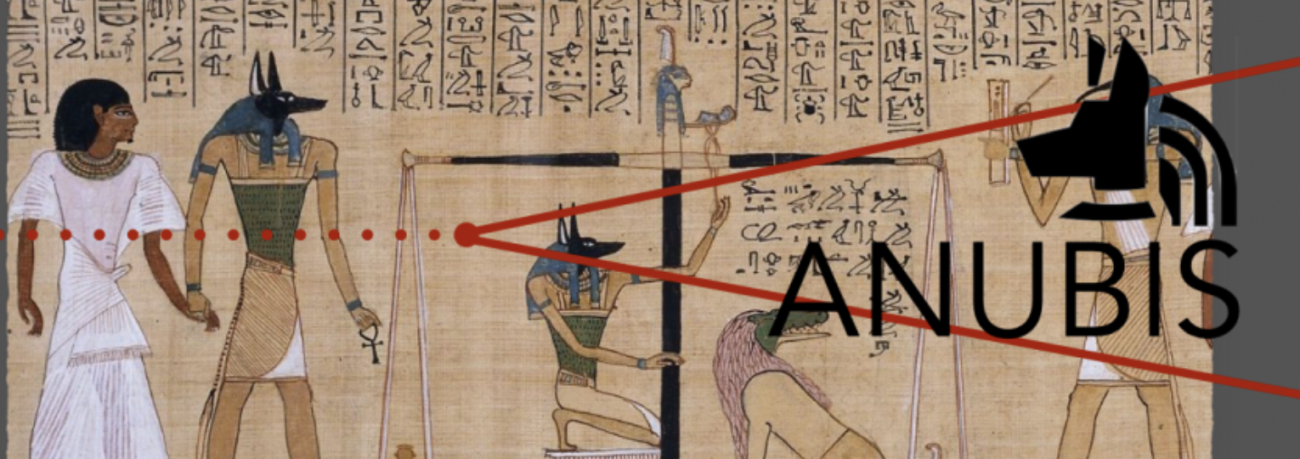
The ancient Egyptians believed Anubis was a jackal-headed god who accompanied kings to the underworld. Today we know better: ANUBIS is a proposed extension to the ATLAS detector to explore the dark sector by searching for long-lived particles (LLPs).
What are LLPs and why should we care?
Long-lived particles are abundant in the Standard Model (SM). Examples include b-hadrons, pions, and neutrons. They acquire long lifetimes through mechanisms such as small amounts of energy released in potential decays, decays mediated by heavy particles, and small couplings. Such mechanisms are also expected in extensions to the SM, resulting in exotic LLPs in most beyond-the-SM theories. Examples include supersymmetry, heavy neutral leptons, and models where the SM and a dark sector are connected via a Higgs-like mediator. Exotic LLP decay lengths are roughly constrained to 108 km based on Big Bang Nucleosynthesis (BBN).
Despite the theoretical motivation for LLPs, they have not been observed so far. This could be due to the design of the LHC experiments, which focused on promptly decaying particles.
The search for LLPs at the LHC… and its limitations
The p-p collision experiments have been conducting dedicated searches for LLPs for some years now. ATLAS, CMS and LHCb have developed specialised algorithms, techniques, and innovative approaches to reject unusual backgrounds. Remarkably, they have set limits on neutral LLP decay lengths up to a few hundred metres. However, this leaves a gap between 100m and the BBN limit, potentially missing LLPs with long lifetimes. This scenario would be disastrous, as it means overlooking a potential discovery at the LHC. Maximising the potential of the multi-billion-dollar LHC investment necessitates finding a way to detect these LLPs if they exist.
Exploring the lifetime frontier at the LHC
Several proposals have been made to increase our sensitivity to LLPs. MATHUSLA [1] proposes to build a warehouse-sized volume some 100m away from the CMS interaction point (IP), with tracking layers on the ceiling to veto cosmic rays and measure potential LLP signals. CODEX-b [2] would be a cubic array of tracking stations installed in the LHCb cavern 10m away from the IP. Finally, ANUBIS would be arrays of RPCs installed on the ceiling of the ATLAS experimental cavern, around 70m away from the IP. Each proposal could provide drastically improved sensitivity to LLPs, sometimes nearly all the way up to the BBN limit.
Instrumenting the ATLAS cavern
In this article we focus on “An Underground Belayed In-Shaft detector” (ANUBIS) [3]. Despite the name, the current design proposes to instrument the ceiling of the ATLAS cavern, not the access shaft. The objective is to capture decays of LLPs between ATLAS and the ceiling. Major backgrounds would be cosmic rays and long-lived SM hadrons produced in p-p collisions. The sensitivity of the proposal exploits an active veto from ATLAS detector itself for most SM backgrounds, with the rock protecting from cosmic rays.
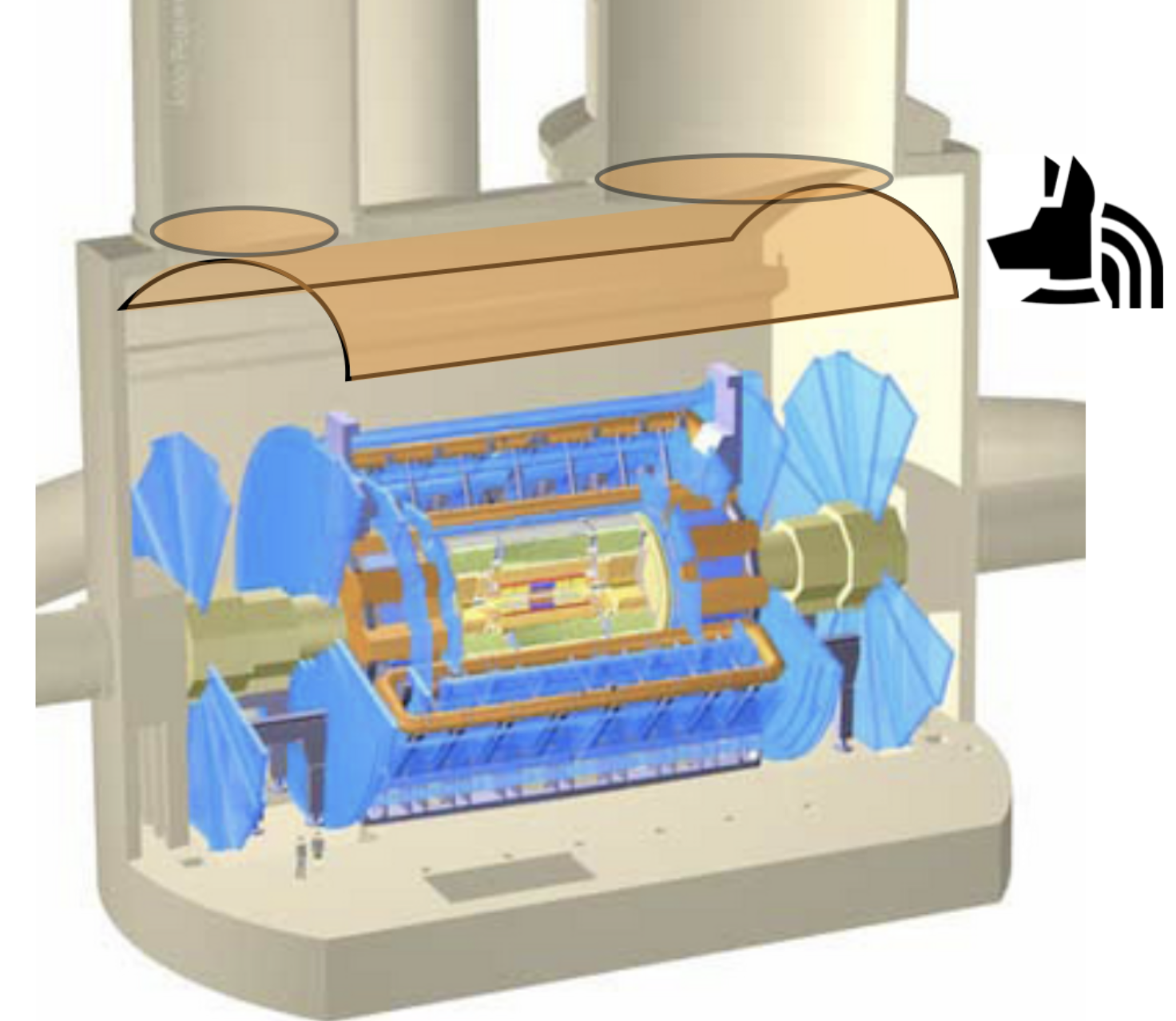
Figure 1: Proposed location of the ANUBIS detector instrumentation in the ATLAS cavern.
There were several important challenges for this proposal. First, would it really be able to probe LLP lifetimes orders of magnitude above the current sensitivity? Next can ANUBIS be integrated with the ATLAS trigger system to use it as an active veto? Further, for this proposal to be successful, it needs to be relatively cheap: how can the costs be kept down? And finally, is the expected SM background estimate realistic... and how can it be validated?
ANUBIS: Challenges and opportunities
The first question regarding the sensitivity of ANUBIS was resolved by sensitivity studies in [4], showing that ANUBIS has impressive reach for the benchmark hidden sector models used by ATLAS and CMS.
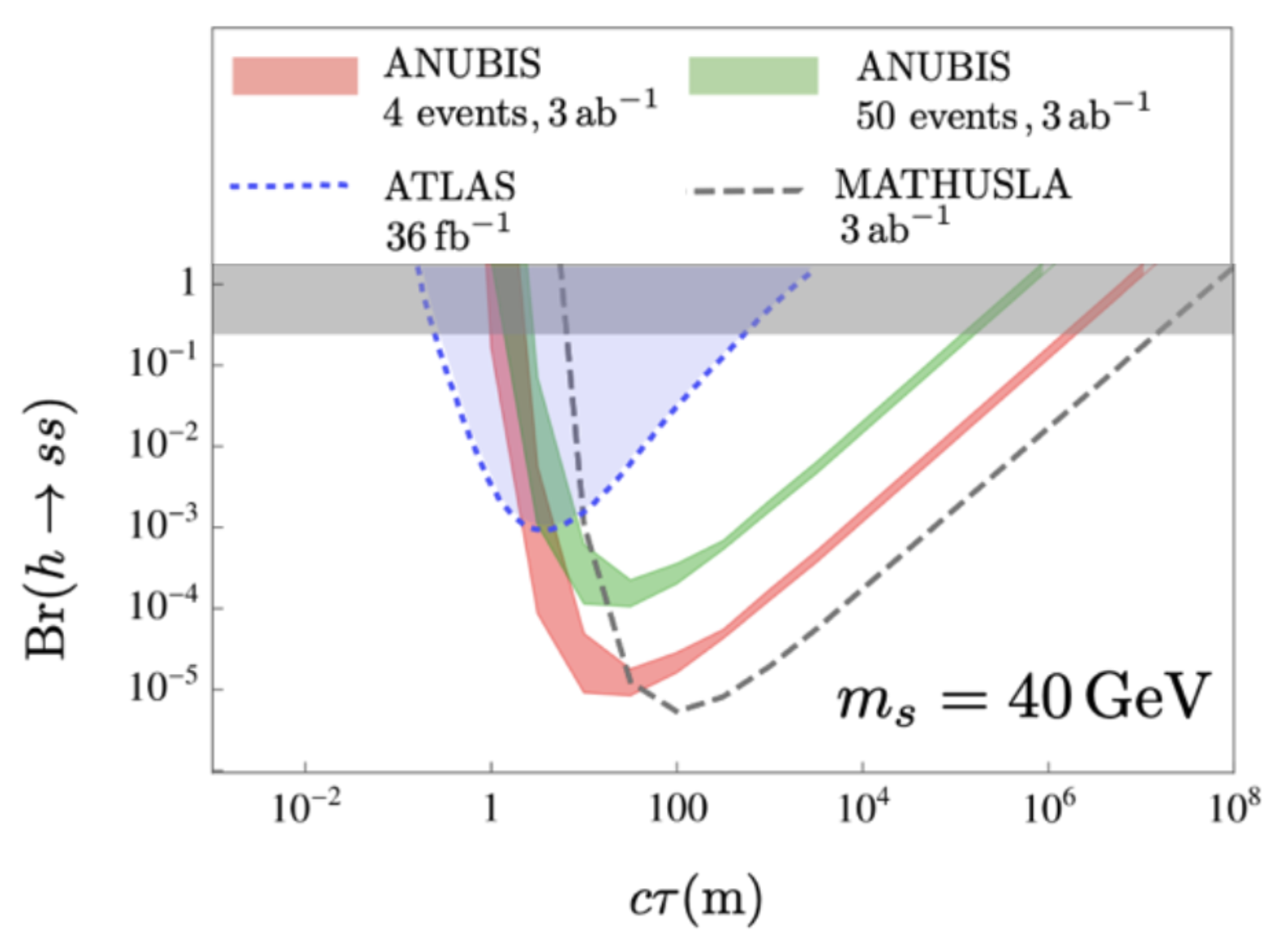
Figure 2: Sensitivity of ANUBIS proposal compared to ATLAS results and other proposals, for a Higgs-mediated hidden sector model. Adapted from the ANUBIS proposal (arXiv:1909.13022).
The question of integrating ANUBIS into the ATLAS trigger system has been resolved: the distance is short enough that the trigger decision can be transmitted. Indeed, it would take a signal approximately 0.5 microseconds to make the return trip from ATLAS to ANUBIS, while the trigger latency expected at the HL-LHC is of the order of 10 microseconds. This means that information from the ATLAS sub detectors can be used to veto events. Conversely, ANUBIS can be used as an external trigger. If a discovery is made, it would be possible to see if the LLPs are preferentially created with other objects, such as leptons, jets or missing energy / transverse momentum.
The question of costs boils down to what the tracking stations are to be made of. One way to keep costs from ballooning is to re-use existing technologies. For this reason, BIC78 resistive plate chambers (RPCs) have been chosen. These are being developed for the ATLAS muon system barrel upgrade. Re-using this technology implies significant savings on R&D and production costs.
The final question involves the SM background expected for ANUBIS. In particular, neutrons or long-lived kaons have been identified as potential sources, since they could, in rare cases, traverse ATLAS without being detected. These backgrounds have been studied using simulation, and found to be controllable. It is important to validate the predicted rate: one needs a physical prototype.
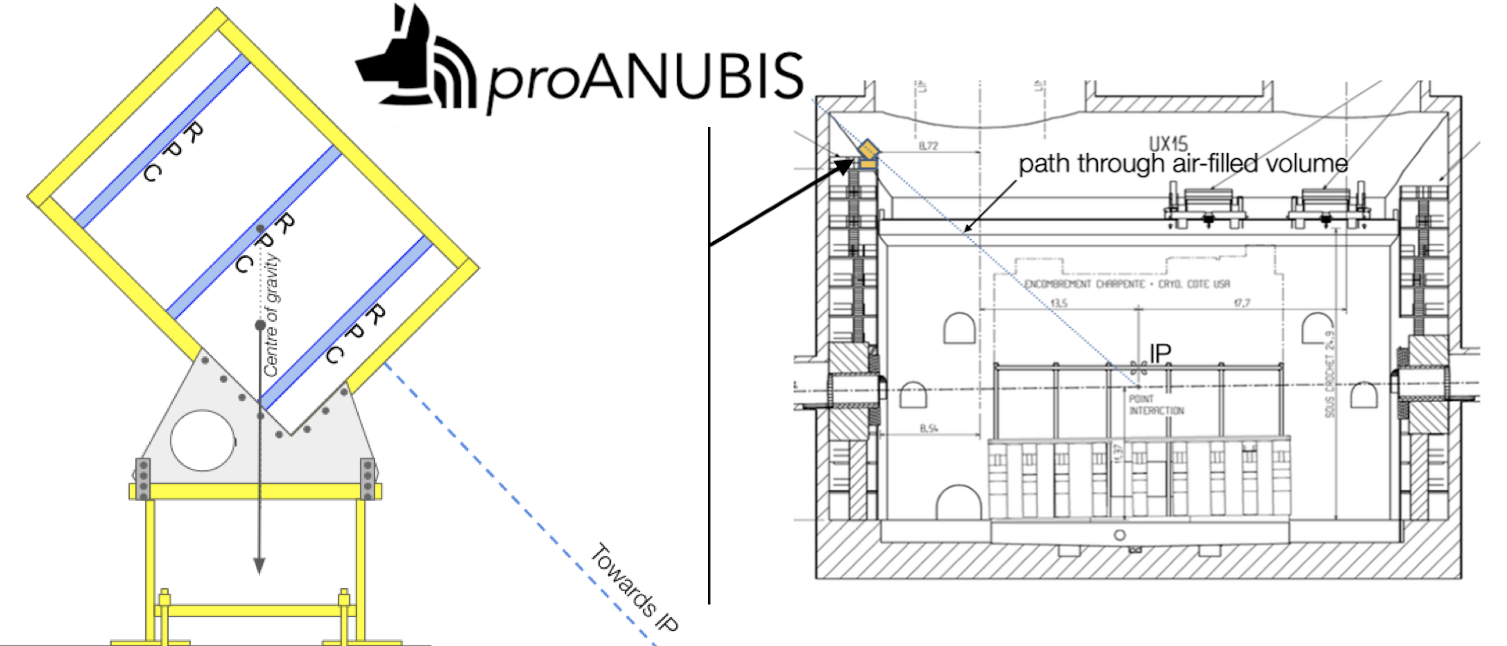
Figure 3: Two layers of the proANUBIS demonstrator, and its location within the ATLAS cavern where it has recently been installed.
Installation of the ProANUBIS demonstrator
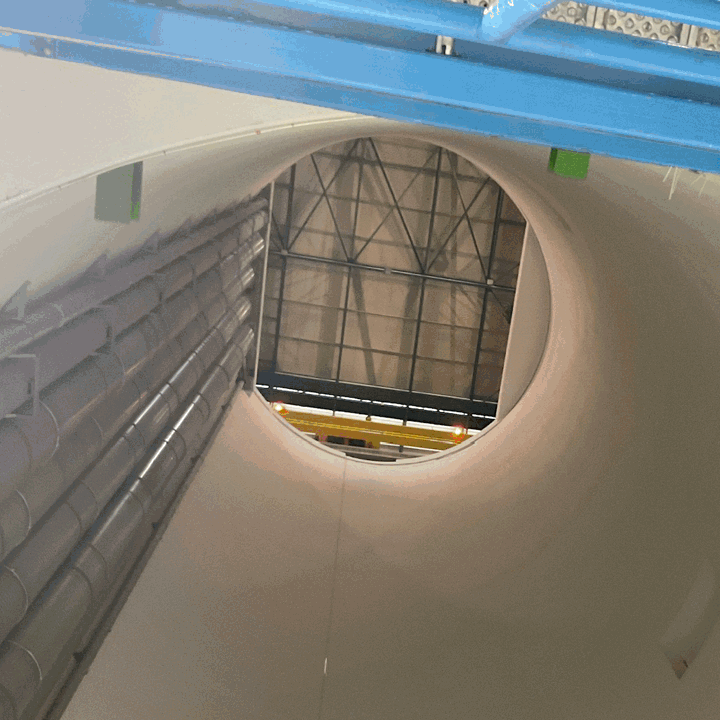
Figure 4: An animation showing the lowering of the proANUBIS demonstrator into its location in the ATLAS cavern.
A prototype ANUBIS is required to demonstrate the technology and validate the SM background prediction. This is the purpose of proANUBIS: an array of three layers of RPC doublets measuring 1m x 1.8m. ProANUBIS construction began in February 2022, and it was lowered into the ATLAS cavern in March 2023. It has been installed on a platform connected to the access stairway, with its RPC layers perpendicular to the ATLAS IP. The prototype detector is currently being commissioned. Recording cosmic rays and collision data are the first immediate goals. ProANUBIS will permit validation of the background modelling, design of the tracking and reconstruction algorithms, and if all goes well, pave the way for the full ANUBIS programme.
The future is bright
In summary, ANUBIS offers an exciting possibility to dramatically extend the reach of the LHC programme in terms of LLP lifetimes, reaching far beyond what ATLAS or CMS could envision alone, and making great headway towards the BBN limit. The detector would be installed in the ATLAS experimental cavern ceiling. The ProANUBIS demonstrator is installed in the ATLAS cavern for data taking during LHC Run 3 and will provide a proof-of-concept for this exciting project.
Further reading
[1] https://arxiv.org/abs/1806.07396
[2] https://arxiv.org/abs/2203.07316
[3] https://arxiv.org/abs/1909.13022
[4] https://cds.cern.ch/record/2839063?ln=en
